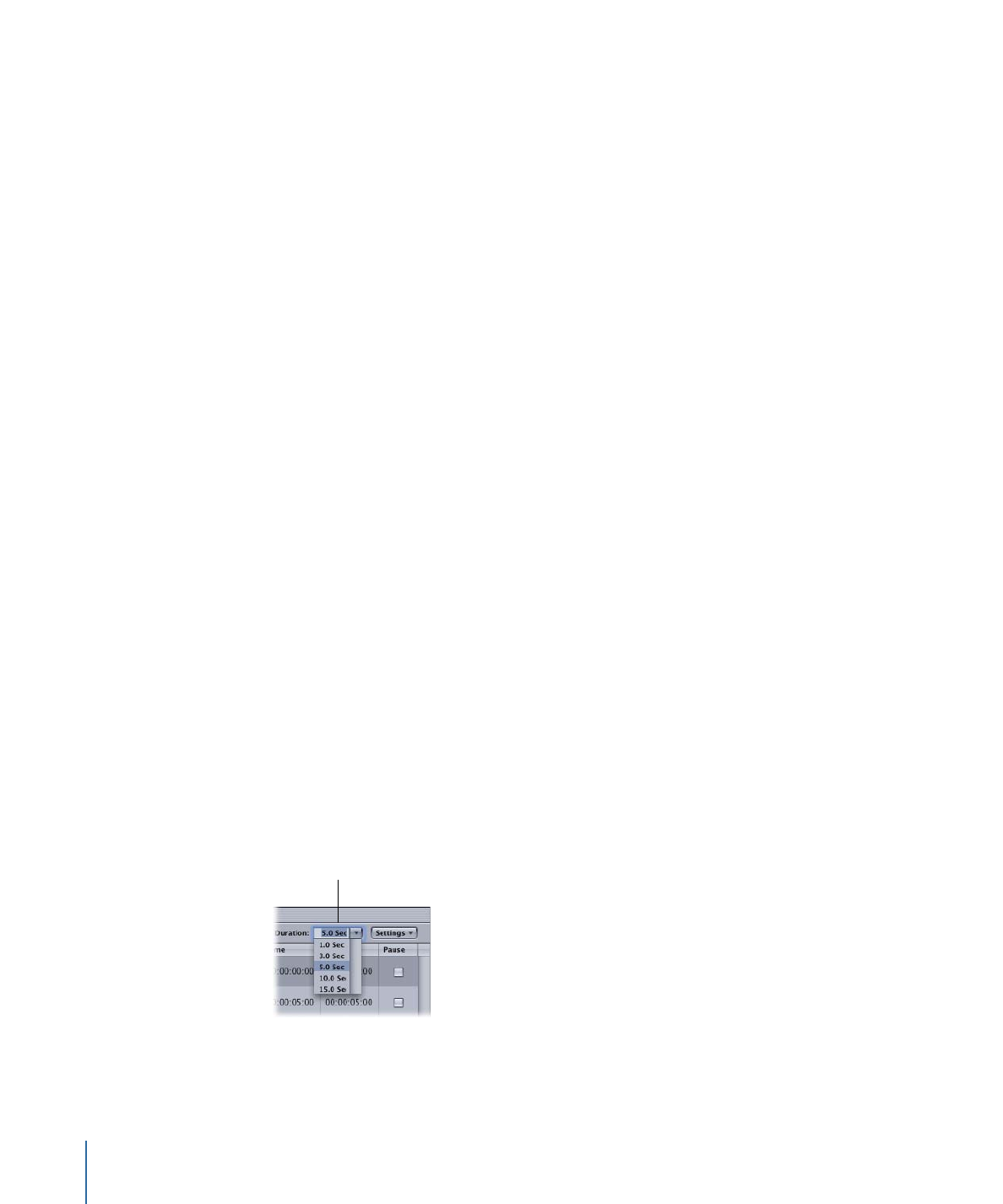
Slide List
The Slideshow Editor displays eight columns of information for each slide. You can edit
two of these columns: Duration and Pause.
Note: You can drag the list headings to rearrange their order. You can also drag the edges
of the Audio columns to control its width.
• No.: Displays each slide’s number, indicating its order in the slideshow. You cannot
edit this number directly, but if you drag one or a group of slides to a new position,
the number is changed to reflect the slide’s new position in the slideshow.
• Image: Displays a thumbnail image of each slide. All slides with a transition assigned
have a triangle in their lower-right corner. Press Command–Equal Sign (=) for large
thumbnails and Command-Hyphen (-) for small thumbnails.
• File: Displays the name of each slide’s asset file.
• Audio: Displays the name of the audio file assigned to the slide (if applicable).
429
Chapter 18
Creating Slideshows

• Time: Displays the slideshow’s elapsed time at the beginning of each slide. This time
value does not include the duration of the slide it is listed with. All slideshows start at
00:00:00:00. While you cannot directly edit this value, changing the duration of any
slides positioned earlier in the list will change this time value.
• Duration: Displays the slide duration. This value is either the default duration selected
in the Preferences window, the length of the audio file assigned to the slide, or, when
using an overall audio file with the “Fit to audio” option selected in the Slideshow
Duration pop-up menu, a value calculated so that all slides play for an equal amount
of time and match the overall audio file length. You can edit this duration except on
slides that have an audio asset assigned to them or in slideshows with an overall audio
file that have “Fit to audio” selected. See
Manually Changing a Slide’s Duration
for
details.
• Pause: Select the checkbox if you want a pause to occur at the end of the slide. The
viewer then manually advances to the next slide using the Next button or Play button
on the DVD player’s remote control.
Note: If the slide contains a transition, the pause occurs before the transition. When
the viewer advances to the next slide, the transition plays and then the next slide
appears.